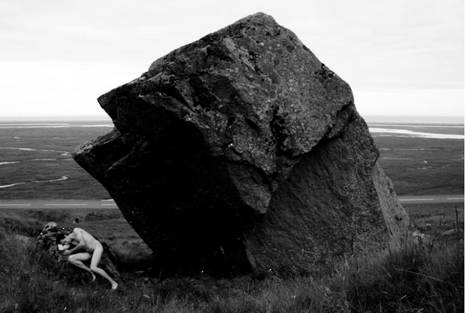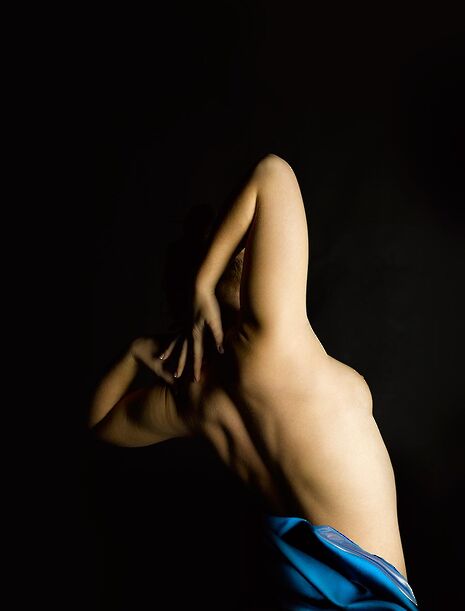Scandal: Changing the way we see the nude
Hannah Oghene, curator of next week’s Scandal exhibition, talks classical nudity, sexualisation and the limits of a western perspective

Scandal, the pop-up exhibition opening this week, will explore our almost voyeuristic preoccupation with the nude body. It’s an ironic title because nudity need no longer be scandalous. Nowadays naked bodies are regularly exposed in show-business and the media, from Kim Kardashian’s attempt to “break the internet” and hackers leaking Jennifer Lawrence’s private photos, to programmes like Lena Dunham’s Girls or Game of Thrones. While some may grumble, claiming that certain forms of nudity ‘ought’ to be concealed, Fine Arts have been portraying nude subjects in many different forms and for many different aesthetic purposes for millennia. Perceptions of nudity differ massively across different eras and cultures and our western view of the nude as scandalous or salacious is actually rather narrow minded. We ought to ask ourselves, why can artists portray a nude with no-one turning up their nose, yet when a celebrity bears themselves they’re met with cries of shock, or at least judgement, from the general public? Why is it that Christian morality and propriety dictates that we dress in a way that is understated and not too revealing while the galleries at the Vatican City display nude art with pride? Having been dispelled from the Garden of Eden, where nudity was natural and perfectly acceptable, why is it only in art that men and women can return to this idyllic state?
In the classical world, where we generally consider civilisation and Western codes of living to have originated, nudity was accepted in many social, cultural and even political spheres. Men would be naked in Roman baths and Greek Gymnasiums, which were considered social hubs for thought and discussion. These places were also littered with statues of nude men which set the naked scene, as evidenced by the Roman copy of a Greek Apoxymenos statue (an athlete scraping sweat and dust from himself) which the Emperor Agrippa installed in the Baths of Agrippa in Rome and which now stands in the Vatican museum. Were these sculptures in the same physical shape as those that frequented the baths? Unlikely– the aesthetic of Classical nude sculptures almost always focused on the beauty of the perfect male body, taking its inspiration from the ideal physique of athletes, who would also compete in the nude.
The Scandal exhibition counters the Classical tradition by portraying the male nude stripped of the power that the idealism of the period afforded the male body. The chiselling of muscles in classical sculptures exuded the power and strength of man, but the works of Justyna Maluchnik expose his vulnerability in the face of nature, reverting him to an almost child-like state. Conversely, she also shows that there is beauty in bodies that are not rippling with muscle.
Where male nudity was conventionally linked with power, the naked female body is often inextricably bound up with sex. Even in the classical canon it is rare to find a nude portrayal of a woman other than that of Aphrodite, the goddess of sex and love. Meanwhile, other artistic periods have had a fixation with female nudity. For instance, women were invariably the subjects of nude art in the Modernist Period. In movements like Modernism and Surrealism, art was often a way of realising the sexual fantasies of the artist. Today, it is even harder for us to separate sexuality from the female form. The appropriation of the female body in sexualised advertising and in culture has reached such an extent that even a woman breast-feeding in public has become taboo.

In the Scandal exhibition, female nudes will not be pointing to the sexual nature of the female body, but will highlight the strength of women. For this reason, Yasmina Podgorski’s piece shows a female body in a powerful stance; a striking pose that exudes strength and majesty. In nude art, certain body types are normally excluded because of preconceived notions of beauty and the pressure on women to be perfect. However, Anna Efstathiou has portrayed a woman whose body is not a size 8 but is still beautiful and aesthetically complex. Artists have often chosen women as subjects for purely superficial purposes. In her work, however, Efstathiou brings about the complexity of the female and sheds light on the struggles that women face not only with their body but with life.
The Scandal Exhibition also exposes differing cultural representations of the nude. It is sponsored by Cambridge University African Caribbean Society because the exhibition aims to juxtapose African and Western cultures and their perceptions of the nude. Nudity has always been a feature of African art and culture, particularly in traditional African sculpture. Focus tends to be on the role of the female body as mother, with breastfeeding a common sight. Nudity also forms an important part of certain African cultures outside of the artistic realm as Ayo Oladipupo Filade explores in his work on the nudist culture of the Himba tribe in Namibia. His work highlights the fact that, in some civilisations, nudity is the norm and therefore encoruages us to look beyond the nudity of his subjects. His piece depicting a young girl draws us into her world, with her eyes and her expression hinting at a story beyond her nude body. Another African artist in the exhibition, Ekeolu Oyetunde Kazeeem, has decided to discuss aspects of female sexuality in Nigerian culture, from the depiction of beads that are worn around the waist and head to signify what are considered places of power in a woman, to an exploration of the sexual struggles that a woman must go through to get through poverty. His pieces take up the childlike figures that are commonly seen in African art and he includes vivid patterns and cloths that are emblematic of Africa.
Scandal is about changing the way we view the nude by exposing cultural biases. I curated the exhibition with a few influences in mind. Being a Classics student and being of African descent, I noticed that between these cultures there were certain parallels of freedom, both of expression and of the body, which through observation might inform or challenge our modern, westernised perceptions of the nude.
The exhibition is presented in association with Changing Spaces Cambridge, an organisation that creatively enhances the high-streets of Cambridge by setting up pop-up galleries.
The exhibition will take place at 9 Norfolk Street between the 13th and 18th January 2015.
 News / SU reluctantly registers controversial women’s soc18 December 2025
News / SU reluctantly registers controversial women’s soc18 December 2025 Features / Should I stay or should I go? Cambridge students and alumni reflect on how their memories stay with them15 December 2025
Features / Should I stay or should I go? Cambridge students and alumni reflect on how their memories stay with them15 December 2025 News / Dons warn PM about Vet School closure16 December 2025
News / Dons warn PM about Vet School closure16 December 2025 News / Cambridge study finds students learn better with notes than AI13 December 2025
News / Cambridge study finds students learn better with notes than AI13 December 2025 News / Uni registers controversial new women’s society28 November 2025
News / Uni registers controversial new women’s society28 November 2025








